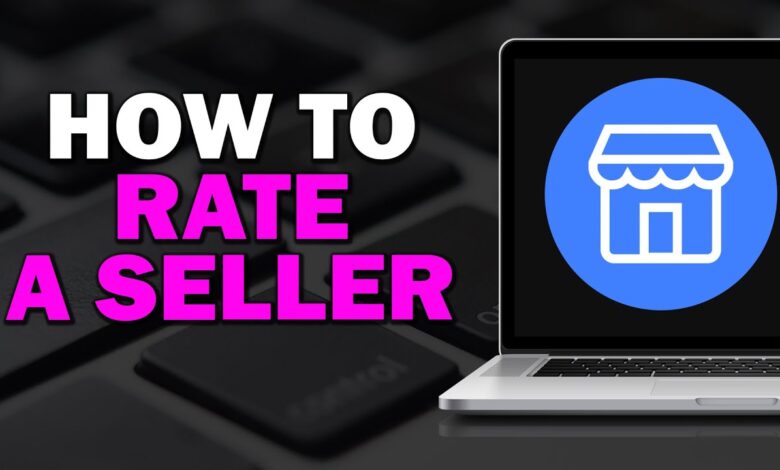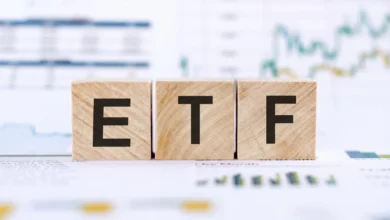What Does “You Can Now Rate This Seller Meaning” ? A 2025 Guide for Online Shoppers & Sellers

In today’s digital shopping world, trust is everything. Whether you’re buying vintage boots on eBay or handmade candles on Etsy, your opinion as a customer carries serious weight. When you see the message you can now rate this seller, it’s more than just a prompt it’s your chance to shape the online marketplace.
This article explains what that message really means, how ratings work across platforms, and how both buyers and sellers can navigate feedback effectively.
What Does You Can Now Rate This Seller Meaning?
This phrase appears once a transaction has been completed usually after the item has been delivered or the return window has passed. It signals that you’re now eligible to leave a public review and/or star rating for the seller based on your experience.
You’ll typically rate the seller on:
-
Item accuracy (Was it as described?)
-
Shipping speed
-
Packaging quality
-
Communication or responsiveness
🖼️ Visual Example:
On eBay, you’ll see a “Leave Feedback” button under your purchase history after delivery. Clicking it brings up a feedback form with options for positive, neutral, or negative ratings and a space to leave a comment.
Key Nuances of Seller Rating Systems
Every platform handles seller ratings a bit differently, but here are some important factors to keep in mind:
⏱️ Time Windows Matter
Most platforms limit how long you have to rate a seller. For example:
-
eBay: 60 days from the date of purchase
-
Amazon: 90 days after the order date
-
Etsy: 100 days from estimated delivery
📝 You Can Often Edit Your Feedback
On some sites (like eBay or Etsy), you can revise your feedback especially if a seller resolves your issue post-sale.
❗ Negative Ratings Have Real Impact
Low feedback scores can:
-
Reduce seller visibility in search results
-
Lead to account warnings or suspensions
-
Remove access to seller perks (like “Top Rated Seller” or “Star Seller” badges)
From the Seller’s Perspective: Why Feedback Matters
For sellers, ratings aren’t just vanity metrics they’re tied directly to sales performance and platform trustworthiness. Here’s how feedback affects sellers:
🔍 Visibility & Algorithms
High-rated sellers often enjoy:
-
Better search placement
-
More impressions on product listings
-
Access to special promotional features
This is because algorithms prioritize trustworthy sellers to improve the buyer experience.
📉 Handling Negative Feedback Professionally
If a buyer leaves a negative rating:
-
Respond respectfully in the comment section (if allowed)
-
Offer a refund or replacement, where appropriate
-
Privately message the buyer to resolve the issue
✅ Pro Tip: If the issue is resolved, kindly ask the buyer to update their review. Many platforms allow revisions within the feedback window.
Cross-Platform Snapshot: Similarities and Differences
| Platform | Rating System | Buyer Feedback Window | Editable? | Seller Impact |
|---|---|---|---|---|
| eBay | 1–5 stars + comment | 60 days | ✅ Yes | Impacts seller level, visibility |
| Amazon | Star rating + public review | 90 days | ✅ Yes | Affects Buy Box eligibility |
| Etsy | 1–5 stars + optional photo/comment | 100 days | ✅ Yes | Determines “Star Seller” status |
| Facebook Marketplace | Thumbs up/down + optional message | No set window | ❌ No | Influences user trust, not algorithm-heavy yet |
💬 Note: While the specifics vary, the shared goal across all platforms is the same: to create a more transparent and trustworthy experience for everyone.
A Quick Look Back: The Evolution of Rating Systems
Seller feedback wasn’t always so sophisticated. In the early 2000s, eBay pioneered a simple feedback system that allowed buyers to leave only text-based comments. Over the years, platforms added star ratings, response options, buyer protection tools, and algorithmic weight to feedback scores.
Today, reviews are an integral part of platform credibility and customer decision-making. They’re also an evolving tool—continually refined based on abuse prevention, fairness, and user experience.
Final Thoughts: A Two-Way Trust System
When you see you can now rate this seller, think of it as a digital handshake a moment where your voice supports good sellers, warns other buyers of poor experiences, and helps improve the ecosystem of online commerce.
For buyers, it’s about being honest but fair.
For sellers, it’s about consistency, communication, and resolution.
Want to dive deeper into seller strategies or platform comparison guides? Check out more articles on FinanceDeep.com—where we make the business of online selling and buying smarter.





